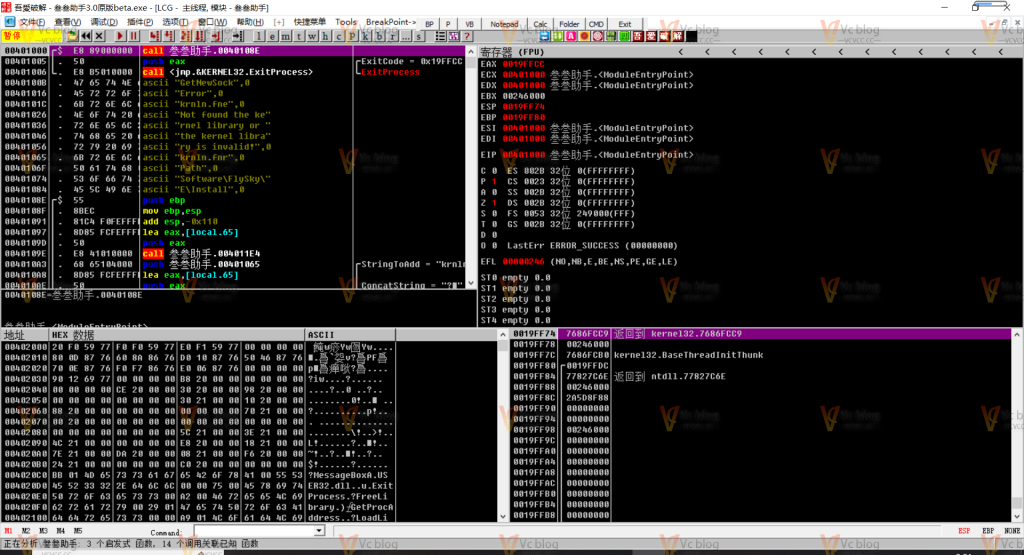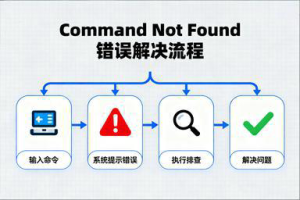Linux系统开机启动项管理是系统性能优化的重要环节,直接影响启动速度和系统资源占用。本文通过真实生产环境案例,深度解析systemd服务、init脚本、定时任务等启动机制,提供完整的启动项排查、管理和优化方案,帮助用户显著提升系统启动效率。
![图片[1]-Linux开机启动项全面管理:解决启动慢和服务冲突的实战指南](https://blogimg.vcvcc.cc/2025/11/20251107123049856.png?imageView2/0/format/webp/q/75)
一、启动项全面排查与诊断
1. 系统启动过程深度分析
(1)启动时间分析与瓶颈定位
<strong>#!/bin/bash</strong>
# boot_time_analyzer.sh
echo "====== 系统启动时间深度分析 ======"
echo "分析时间: $(date)"
echo ""
# 1. 系统启动时间统计
echo "1. 系统启动时间统计:"
if command -v systemd-analyze >/dev/null <strong>2</strong>><strong>&1</strong>; then
echo "内核启动时间: $(systemd-analyze | grep kernel | awk '{print $4}')"
echo "用户空间启动时间: $(systemd-analyze | grep userspace | awk '{print $5}')"
echo "总启动时间: $(systemd-analyze | grep 'Startup finished' | awk '{print $6, $7}')"
else
echo "systemd-analyze不可用,使用dmesg分析启动时间"
dmesg | grep "Startup finished" | tail -1
fi
# 2. 启动服务时间明细
echo -e "\n2. 启动服务时间明细:"
if command -v systemd-analyze >/dev/null <strong>2</strong>><strong>&1</strong>; then
echo "启动最慢的服务:"
systemd-analyze blame | head -10
fi
# 3. 启动关键路径分析
echo -e "\n3. 启动关键路径分析:"
if command -v systemd-analyze >/dev/null <strong>2</strong>><strong>&1</strong>; then
systemd-analyze critical-chain | head -15
fi
# 4. 传统系统启动日志分析
echo -e "\n4. 系统启动日志分析:"
if [ -f /var/log/boot.log ]; then
echo "启动日志文件大小: $(ls -lh /var/log/boot.log | awk '{print $5}')"
echo "最后启动的关键事件:"
grep -E "(starting|started|failed)" /var/log/boot.log | tail -10
else
echo "未找到boot.log文件"
fi(2)启动服务依赖关系检查
<strong>#!/bin/bash</strong>
# service_dependency_checker.sh
echo "====== 启动服务依赖关系分析 ======"
echo ""
# 检查服务依赖关系
analyze_service_dependencies() {
local service=$1
if [ -z "$service" ]; then
echo "请指定要分析的服务名"
return 1
fi
echo "分析服务: $service"
echo ""
# 检查服务状态
if systemctl is-enabled "$service" >/dev/null <strong>2</strong>><strong>&1</strong>; then
echo "✅ 服务已启用"
else
echo "❌ 服务未启用"
fi
# 显示服务依赖
echo -e "\n服务依赖关系:"
systemctl list-dependencies "$service" --reverse | head -20
# 检查服务冲突
echo -e "\n服务冲突检查:"
systemctl list-dependencies "$service" | grep -E "(conflicts|before|after)" | while read line; do
echo "依赖关系: $line"
done
}
# 检查循环依赖
check_circular_dependencies() {
echo -e "\n5. 循环依赖检查:"
# 检查所有服务的依赖关系
systemctl list-unit-files --type=service | grep enabled | awk '{print $1}' | while read service; do
# 简单的循环依赖检测
if systemctl list-dependencies "$service" <strong>2</strong>>/dev/null | grep -q "$service"; then
echo "⚠️ 发现可能的循环依赖: $service"
fi
done
}
# 检查启动顺序问题
check_startup_ordering() {
echo -e "\n6. 启动顺序检查:"
# 检查网络相关服务的启动顺序
network_services=("network" "NetworkManager" "systemd-networkd")
for service in "${network_services[@]}"; do
if systemctl is-enabled "$service" >/dev/null <strong>2</strong>><strong>&1</strong>; then
echo "网络服务: $service"
systemctl show "$service" | grep -E "(After|Before|Requires)" | head -5
echo ""
fi
done
}
main() {
local target_service=${1:-"nginx"}
analyze_service_dependencies "$target_service"
check_circular_dependencies
check_startup_ordering
}
main "$@"二、systemd服务管理深度优化
1. systemd服务配置优化
(1)服务启动参数调优
<strong>#!/bin/bash</strong>
# systemd_service_optimizer.sh
echo "====== systemd服务配置优化 ======"
echo ""
# 分析服务启动配置
analyze_service_config() {
local service=$1
if [ -z "$service" ]; then
echo "请指定要分析的服务名"
return 1
fi
service_file=$(systemctl show "$service" | grep FragmentPath | cut -d= -f2)
echo "服务: $service"
echo "配置文件: $service_file"
echo ""
if [ -f "$service_file" ]; then
# 检查启动类型
echo "启动配置分析:"
grep -E "(Type|TimeoutStartSec|TimeoutStopSec|Restart|RestartSec)" "$service_file" | while read line; do
echo " $line"
done
# 检查资源限制
echo -e "\n资源限制配置:"
grep -E "(MemoryLimit|CPUShares|LimitNOFILE|LimitNPROC)" "$service_file" | while read line; do
echo " $line"
done
# 检查依赖配置
echo -e "\n依赖关系配置:"
grep -E "(After|Before|Requires|Wants)" "$service_file" | while read line; do
echo " $line"
done
else
echo "未找到服务配置文件"
fi
}
# 优化服务启动参数
optimize_service_parameters() {
local service=$1
echo -e "\n优化建议:"
# 检查启动超时设置
current_timeout=$(systemctl show "$service" | grep TimeoutStartSec | cut -d= -f2)
if [ "$current_timeout" = "0" ] || [ -z "$current_timeout" ]; then
echo "⚠️ 建议设置启动超时: TimeoutStartSec=300s"
fi
# 检查重启策略
restart_policy=$(systemctl show "$service" | grep Restart | grep -v RestartSec | head -1 | cut -d= -f2)
if [ "$restart_policy" = "no" ] || [ -z "$restart_policy" ]; then
echo "⚠️ 建议配置重启策略: Restart=on-failure"
fi
}
# 创建优化后的服务配置
create_optimized_service() {
local service=$1
local service_file=$(systemctl show "$service" | grep FragmentPath | cut -d= -f2)
if [ ! -f "$service_file" ]; then
echo "未找到服务配置文件"
return 1
fi
backup_file="${service_file}.backup.$(date +%Y%m%d)"
cp "$service_file" "$backup_file"
echo "原配置已备份到: $backup_file"
# 创建优化配置(这里只是示例,实际需要根据服务特性调整)
cat > "/tmp/${service}.optimized.service" << EOF
[Unit]
Description=Optimized ${service} Service
After=network.target
[Service]
Type=simple
ExecStart=/usr/bin/${service}
TimeoutStartSec=300
TimeoutStopSec=30
Restart=on-failure
RestartSec=10
LimitNOFILE=65536
[Install]
WantedBy=multi-user.target
EOF
echo "优化配置已生成: /tmp/${service}.optimized.service"
echo "请手动审核后替换原配置"
}
main() {
local target_service=${1:-"nginx"}
analyze_service_config "$target_service"
optimize_service_parameters "$target_service"
read -p "是否生成优化配置? (y/N): " -n 1 -r
echo
if [[ $REPLY =~ ^[Yy]$ ]]; then
create_optimized_service "$target_service"
fi
}
main "$@"2. 服务启动并行化优化
(1)启动依赖关系优化
<strong>#!/bin/bash</strong>
# startup_parallel_optimizer.sh
echo "====== 启动并行化优化 ======"
echo ""
# 分析启动依赖图
analyze_startup_dependencies() {
echo "1. 系统启动依赖图分析:"
# 获取所有服务的启动时间线
if command -v systemd-analyze >/dev/null <strong>2</strong>><strong>&1</strong>; then
echo "生成启动依赖图..."
systemd-analyze dot | dot -Tsvg > /tmp/boot_graph.svg <strong>2</strong>>/dev/null
if [ $? -eq 0 ]; then
echo "启动依赖图已保存: /tmp/boot_graph.svg"
else
echo "需要安装graphviz生成依赖图: apt-get install graphviz"
fi
fi
}
# 识别串行启动瓶颈
identify_serial_bottlenecks() {
echo -e "\n2. 串行启动瓶颈识别:"
# 分析启动链中的串行依赖
systemd-analyze critical-chain | grep -E "[0-9]+ms" | while read line; do
delay=$(echo "$line" | grep -o "[0-9]\+ms")
service=$(echo "$line" | awk '{print $1}')
if [[ "$delay" > "1000ms" ]]; then
echo "⚠️ 启动延迟: $service - $delay"
fi
done
}
# 优化依赖关系
optimize_dependencies() {
echo -e "\n3. 依赖关系优化建议:"
# 检查可以并行启动的服务
echo "可以调整依赖关系的服务:"
# 网络服务依赖优化
if systemctl is-enabled network-online.target >/dev/null <strong>2</strong>><strong>&1</strong>; then
echo "网络服务: 考虑使用network-online.target替代network.target"
fi
# 数据库服务依赖优化
if systemctl is-enabled mysql >/dev/null <strong>2</strong>><strong>&1</strong>; then
echo "MySQL: 检查是否可以在网络就绪后立即启动"
fi
# Web服务依赖优化
if systemctl is-enabled nginx >/dev/null <strong>2</strong>><strong>&1</strong>; then
echo "Nginx: 可以配置为在文件系统挂载后启动"
fi
}
# 应用并行化优化
apply_parallel_optimization() {
echo -e "\n4. 应用并行化优化:"
# 创建优化配置目录
local optim_dir="/etc/systemd/system/optimized-startup"
mkdir -p "$optim_dir"
# 创建并行启动配置
cat > "$optim_dir/parallel-startup.conf" << EOF
# 并行启动优化配置
# 减少不必要的依赖,允许更多服务并行启动
[Unit]
# 基础服务并行启动
After=basic.target
Before=multi-user.target
# 网络服务优化
Wants=network-online.target
After=network-online.target
# 文件系统服务优化
After=local-fs.target
EOF
echo "并行启动配置已创建: $optim_dir/parallel-startup.conf"
echo "重新加载配置: systemctl daemon-reload"
}
analyze_startup_dependencies
identify_serial_bottlenecks
optimize_dependencies
read -p "是否应用并行化优化配置? (y/N): " -n 1 -r
echo
if [[ $REPLY =~ ^[Yy]$ ]]; then
apply_parallel_optimization
fi三、传统init系统启动管理
1. SysV init启动项管理
(1)init脚本分析与优化
<strong>#!/bin/bash</strong>
# sysv_init_manager.sh
echo "====== SysV init启动项管理 ======"
echo ""
# 检查所有init脚本
check_init_scripts() {
echo "1. Init脚本状态检查:"
init_dirs=("/etc/rc.d" "/etc/init.d" "/etc/rc.local")
for dir in "${init_dirs[@]}"; do
if [ -d "$dir" ]; then
echo "检查目录: $dir"
ls -la "$dir" | head -10
fi
done
# 检查运行级别配置
echo -e "\n运行级别配置:"
for level in {0..6}; do
if [ -d "/etc/rc${level}.d" ]; then
echo "运行级别 $level 启动项:"
ls -la "/etc/rc${level}.d" | grep "^l" | head -5
fi
done
}
# 管理init服务
manage_init_services() {
local action=$1
local service=$2
case $action in
"enable")
echo "启用服务: $service"
update-rc.d "$service" defaults <strong>2</strong>>/dev/null || chkconfig "$service" on <strong>2</strong>>/dev/null
;;
"disable")
echo "禁用服务: $service"
update-rc.d "$service" remove <strong>2</strong>>/dev/null || chkconfig "$service" off <strong>2</strong>>/dev/null
;;
"status")
echo "服务状态: $service"
service "$service" status <strong>2</strong>>/dev/null || /etc/init.d/"$service" status <strong>2</strong>>/dev/null
;;
*)
echo "用法: manage_init_services <enable|disable|status> <服务名>"
;;
esac
}
# 检查rc.local启动项
check_rclocal() {
echo -e "\n2. rc.local启动项检查:"
if [ -f "/etc/rc.local" ]; then
echo "rc.local内容:"
grep -v "^#" /etc/rc.local | grep -v "^$" | while read line; do
echo "启动项: $line"
done
else
echo "未找到rc.local文件"
fi
# 检查rc.local是否可执行
if [ -f "/etc/rc.local" ] && [ ! -x "/etc/rc.local" ]; then
echo "⚠️ rc.local不可执行,运行: chmod +x /etc/rc.local"
fi
}
# 迁移init服务到systemd
migrate_to_systemd() {
local service=$1
if [ -z "$service" ]; then
echo "请指定要迁移的服务名"
return 1
fi
init_script="/etc/init.d/$service"
if [ ! -f "$init_script" ]; then
echo "未找到init脚本: $init_script"
return 1
fi
echo "迁移服务: $service"
# 创建systemd服务文件
cat > "/etc/systemd/system/${service}.service" << EOF
[Unit]
Description=Migrated ${service} service
After=network.target
[Service]
Type=forking
ExecStart=${init_script} start
ExecStop=${init_script} stop
ExecReload=${init_script} reload
Restart=on-failure
[Install]
WantedBy=multi-user.target
EOF
echo "systemd服务文件已创建: /etc/systemd/system/${service}.service"
echo "启用服务: systemctl enable ${service}.service"
echo "禁用init脚本: update-rc.d -f $service remove"
}
main() {
check_init_scripts
check_rclocal
if [ $# -eq 2 ]; then
manage_init_services "$1" "$2"
elif [ $# -eq 1 ]; then
migrate_to_systemd "$1"
else
echo "查看特定服务状态: $0 status <服务名>"
echo "迁移服务到systemd: $0 <服务名>"
fi
}
main "$@"四、用户级启动项管理
1. 用户会话启动控制
(1)桌面环境启动项管理
<strong>#!/bin/bash</strong>
# user_startup_manager.sh
echo "====== 用户级启动项管理 ======"
echo ""
# 检查各种桌面环境的启动项
check_desktop_startup() {
echo "1. 桌面环境启动项检查:"
# 检查GNOME启动项
if [ -d "$HOME/.config/autostart" ]; then
echo "GNOME启动项:"
ls -la "$HOME/.config/autostart" | while read file; do
echo " $file"
done
fi
# 检查KDE启动项
if [ -d "$HOME/.config/autostart" ]; then
echo "KDE启动项:"
find "$HOME/.config/autostart" -name "*.desktop" | while read file; do
echo " $(basename "$file")"
done
fi
# 检查XFCE启动项
if [ -d "$HOME/.config/autostart" ]; then
echo "XFCE启动项:"
find "$HOME/.config/autostart" -name "*.desktop" | while read file; do
echo " $(basename "$file")"
done
fi
}
# 检查shell启动脚本
check_shell_startup() {
echo -e "\n2. Shell启动脚本检查:"
shell_files=(
"$HOME/.bashrc"
"$HOME/.bash_profile"
"$HOME/.profile"
"$HOME/.zshrc"
"$HOME/.config/fish/config.fish"
)
for file in "${shell_files[@]}"; do
if [ -f "$file" ]; then
echo "检查: $file"
# 查找启动时执行的命令
grep -E "(^[^#]|&$|nohup|disown)" "$file" | head -5 | while read line; do
echo " 启动命令: $line"
done
fi
done
}
# 管理系统级用户启动项
check_system_user_startup() {
echo -e "\n3. 系统级用户启动项:"
# 检查/etc/profile.d
if [ -d "/etc/profile.d" ]; then
echo "/etc/profile.d 启动脚本:"
ls -la "/etc/profile.d" | head -10
fi
# 检查/etc/bash.bashrc
if [ -f "/etc/bash.bashrc" ]; then
echo "/etc/bash.bashrc 存在"
fi
# 检查/etc/zsh/zshrc
if [ -f "/etc/zsh/zshrc" ]; then
echo "/etc/zsh/zshrc 存在"
fi
}
# 管理桌面启动项
manage_desktop_startup() {
local action=$1
local desktop_file=$2
case $action in
"disable")
if [ -f "$HOME/.config/autostart/${desktop_file}.desktop" ]; then
mv "$HOME/.config/autostart/${desktop_file}.desktop" \
"$HOME/.config/autostart/${desktop_file}.desktop.disabled"
echo "已禁用: $desktop_file"
elif [ -f "$HOME/.config/autostart/${desktop_file}.desktop.disabled" ]; then
echo "启动项已禁用"
else
echo "未找到启动项: $desktop_file"
fi
;;
"enable")
if [ -f "$HOME/.config/autostart/${desktop_file}.desktop.disabled" ]; then
mv "$HOME/.config/autostart/${desktop_file}.desktop.disabled" \
"$HOME/.config/autostart/${desktop_file}.desktop"
echo "已启用: $desktop_file"
elif [ -f "$HOME/.config/autostart/${desktop_file}.desktop" ]; then
echo "启动项已启用"
else
echo "未找到启动项: $desktop_file"
fi
;;
"list")
echo "当前启动项:"
find "$HOME/.config/autostart" -name "*.desktop" -o -name "*.desktop.disabled" | while read file; do
status=$([ "${file##*.}" = "desktop" ] && echo "启用" || echo "禁用")
echo " $status: $(basename "$file" .desktop.disabled | sed 's/.desktop$//')"
done
;;
*)
echo "用法: manage_desktop_startup <disable|enable|list> [启动项名]"
;;
esac
}
main() {
check_desktop_startup
check_shell_startup
check_system_user_startup
if [ $# -gt 0 ]; then
manage_desktop_startup "$@"
else
echo "管理桌面启动项: $0 <disable|enable|list> [启动项名]"
fi
}
main "$@"五、启动项安全审计
1. 启动项安全扫描
<strong>#!/bin/bash</strong>
# startup_security_audit.sh
echo "====== 启动项安全审计 ======"
echo "审计时间: $(date)"
echo ""
# 检查可疑的启动项
check_suspicious_startup() {
echo "1. 可疑启动项扫描:"
# 检查systemd服务文件权限
echo "检查systemd服务文件权限:"
find /etc/systemd/system /usr/lib/systemd/system -name "*.service" -type f <strong>2</strong>>/dev/null | while read file; do
perms=$(stat -c "%a %U:%G" "$file")
if [[ ! "$perms" =~ 644.*root:root ]]; then
echo "⚠️ 异常权限: $file - $perms"
fi
done
# 检查init脚本权限
echo -e "\n检查init脚本权限:"
find /etc/init.d /etc/rc.d -type f -name "*" <strong>2</strong>>/dev/null | while read file; do
perms=$(stat -c "%a %U:%G" "$file")
if [[ ! "$perms" =~ 755.*root:root ]]; then
echo "⚠️ 异常权限: $file - $perms"
fi
done
# 检查rc.local中的可疑命令
if [ -f "/etc/rc.local" ]; then
echo -e "\n检查rc.local中的可疑命令:"
grep -E "(wget|curl|bash -c|sh -c|\.sh)" /etc/rc.local | while read line; do
echo "⚠️ 可疑命令: $line"
done
fi
}
# 检查启动项完整性
check_startup_integrity() {
echo -e "\n2. 启动项完整性检查:"
# 检查服务文件是否被修改
important_services=("ssh" "nginx" "mysql" "redis")
for service in "${important_services[@]}"; do
if systemctl is-enabled "$service" >/dev/null <strong>2</strong>><strong>&1</strong>; then
service_file=$(systemctl show "$service" | grep FragmentPath | cut -d= -f2)
if [ -f "$service_file" ]; then
# 检查文件哈希(简单版本)
original_hash=$(sha256sum "$service_file" <strong>2</strong>>/dev/null | cut -d' ' -f1)
if [ -n "$original_hash" ]; then
echo "服务: $service, 文件: $(basename "$service_file"), 哈希: ${original_hash:0:16}"
fi
fi
fi
done
}
# 检查隐藏的启动项
check_hidden_startup() {
echo -e "\n3. 隐藏启动项检查:"
# 检查cron启动项
echo "检查cron启动项:"
find /etc/cron* -type f -name "*" <strong>2</strong>>/dev/null | while read file; do
if grep -q "@reboot" "$file" <strong>2</strong>>/dev/null; then
echo "⚠️ cron重启任务: $file"
grep "@reboot" "$file"
fi
done
# 检查profile.d中的隐藏启动项
echo -e "\n检查profile.d启动项:"
find /etc/profile.d -type f -name "*.sh" <strong>2</strong>>/dev/null | while read file; do
if [ -x "$file" ]; then
echo "可执行启动脚本: $file"
fi
done
# 检查systemd用户服务
echo -e "\n检查systemd用户服务:"
find /home/*/.config/systemd/user /root/.config/systemd/user -name "*.service" -type f <strong>2</strong>>/dev/null | while read file; do
echo "用户systemd服务: $file"
done
}
# 生成安全报告
generate_security_report() {
echo -e "\n4. 安全审计报告:"
report_file="/tmp/startup_security_report_$(date +%Y%m%d_%H%M%S).txt"
{
echo "启动项安全审计报告"
echo "生成时间: $(date)"
echo "======================================"
echo ""
echo "1. 系统信息:"
echo " 主机名: $(hostname)"
echo " 内核版本: $(uname -r)"
echo " 系统版本: $(grep PRETTY_NAME /etc/os-release <strong>2</strong>>/dev/null | cut -d= -f2 | tr -d '\"')"
echo ""
echo "2. 启动项统计:"
echo " Systemd服务: $(systemctl list-unit-files --type=service | grep enabled | wc -l) 个已启用"
echo " Init脚本: $(find /etc/init.d /etc/rc.d -type f <strong>2</strong>>/dev/null | wc -l) 个"
echo " 用户启动项: $(find /home/*/.config/autostart /root/.config/autostart -name "*.desktop" <strong>2</strong>>/dev/null | wc -l) 个"
echo ""
echo "3. 安全建议:"
echo " - 定期审查启动项权限"
echo " - 监控新增的启动服务"
echo " - 使用数字签名验证关键服务"
echo " - 限制用户级启动项执行权限"
} > "$report_file"
echo "安全报告已生成: $report_file"
}
check_suspicious_startup
check_startup_integrity
check_hidden_startup
generate_security_report总结
Linux开机启动项管理涉及systemd服务、init脚本、用户会话等多个层面,需要系统化的管理和优化策略。通过本文提供的排查工具和优化方法,可以显著提升系统启动速度,确保启动项的安全性和稳定性。建议建立定期审计机制,及时清理不必要的启动项,优化服务依赖关系。
© 版权声明
THE END

















暂无评论内容